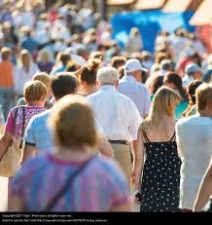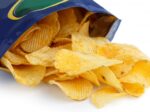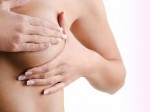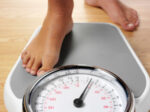 Malnutrition is often thought of as something that only affects the elderly or people living in third world countries, but it can come in many shapes and sizes, sometimes affecting the most unlikely of people.
Malnutrition is often thought of as something that only affects the elderly or people living in third world countries, but it can come in many shapes and sizes, sometimes affecting the most unlikely of people.
Malnutrition occurs when a person does not consume enough energy (calories/ kilojoules) or protein for their body’s needs, potentially due to increased nutritional requirements of being unwell or not eating enough. Identifying and treating malnutrition early is crucial in avoiding outcomes like muscle wasting, reduced immunity and extended hospital stays.
So how do you know if you are malnourished?
Ask yourself the following questions:
- Have you been eating less than usual?
- Is your face looking drawn?
- Have you had to tighten your belt buckle lately
- Have your family or friends recently told you that you look like you have lost weight?
- Are your clothes or jewellery becoming loose?
- Do you have reduced appetite?
If the answer is ‘yes’ to these questions then you could be malnourished.1-3
“Well hang on” I can hear wellness warriors saying. “Being lean and mean is a good thing isn’t it?”
Achieving and maintaining a healthy body weight to height (i.e. Body mass index or BMI) and engaging in regular moderate amounts of aerobic and weight bearing exercise can certainly help to reduce the risks of preventable diseases such diabetes, heart disease and obesity.
However it is very important to keep a track of your changing nutritional needs verses your intake at different times of your life and this includes learning how to maintain a healthy weight during times of sickness, stress and higher energy utilisation.
Who is most at risk?
Malnutrition can affect young and old, the sick as well as the well.
Aging
After middle age adults lose around 3% of their muscle strength every year on average, that can limit their ability to perform many routine activities.
Sarcopenia is a disease associated with aging that causes a loss of lean muscle mass and strength. This can be triggered by a decline in hormones; a change in protein and energy requirements; a more sedentary lifestyle that can lead to an imbalance between muscle loss and body repair.4-6
So a decline in weight can be occurring naturally in our senior population and assumed to be normal and untreatable. We get used to seeing people becoming frailer when in fact malnutrition is setting in. A bout of sickness speeds up the process.
Regularly monitoring these changes in body weight can provide an early warning that nutritional help is needed which is important if we are to keep our elderly folk independent and healthy for longer.
Athletes
Making weight for a particular sport e.g. ballet, gymnastics, wrestling can get out of hand and lead to eating disorders. Endurance athletes can fail to recover sufficient energy to replace the energy used up in an event leading to fatigue and ‘burnout’ or injury can side line an athlete and lead to depression, loss of appetite and failing health.7
People who are overweight
Being overweight is not a protection against malnutrition. It is still possible to be nutrient deficient and overweight. A Dietitian can help you to balance your energy needs as well as to maximise the nutrients important for body growth, repair as well as weight loss.
Children or the sick
People who are hospitalized for surgery, are undergoing treatment for cancer or suffer from recurring illness such as respiratory; gut or renal conditions may experience loss of appetite and weight.
Eat to beat-or treat- malnutrition
When you are ill, your nutrient needs usually increase. For this reason a high protein, high energy (HPHE) diet is often recommended to prevent weight loss (or help with weight gain if necessary), build strength and aid a quick recovery.
If you are in hospital or a rest home or you are just trying to help a loved one or person to regain weight encourage them to reprioritise the order of foods that they eat during this period.
- Eat meat, poultry, seafood, eggs, cheese (tofu or tempeh for vegans). These foods contain protein that will assist muscle building.
- Sip on milk-based or an oral nutritional supplement drinks throughout your meal. These drinks provide protein and energy.
- Eat dessert next. Sweets provide a bit of energy for a small size, which is beneficial when trying to increase energy consumption.
- Eat bread, potato and grains (oats, barley, rice) next as these foods offer energising carbohydrate to help you feel full.
- Eat vegetables at the end of the meal. Although they are important sources of vitamins and minerals, they don’t provide the energy and protein you need most at this time.
- Drink tea, coffee and water last. Although hydration is important these calorie free fluids offer little nutrition so it is better for recovery that you don’t fill up on them at mealtimes.1-3
Have questions or concerns?
Talk to a Dietitian as we can assess your nutrient needs and provide the individual nutritional advice for your current medical situation, age and activity level.
For more articles by Lea on similar topics:
Don’t let energy deficiency ruin your health
Care for ‘the carers’ during family illness
Unlock your full potential with food
Stay in the loop for a brighter future
Don’t let disordered eating ruin your performance
References
- Have we missed a diagnosis? #malnutritionweekANZ 2020 https://dietitianconnection.com and Aspen Malnutrition week http://www.nutritioncare.org/MAW2020/
- Australian Commission on Safety and Quality in Health Care 2018. Hospital-Acquired Complication: MALNUTRITION. https://www.gov.au/sites/default/files/migrated/SAQ7730_HAC_Malnutrition_LongV2.pdf
- Dietitians Australia 2019. Royal Commission into Aged Care Quality and Safety. https://dietitiansaustralia.au/wp-content/uploads/2019/03/DAA_Royal-Commission-Aged-Care_Mar-2019_Final.pdf
- Cruz-Jentoft AJ, Baeyens JP, Bauer JM, Boirie Y, Cederholm T (2010) Sarcopenia: European consensus on definition and diagnosis: report of the European working group on Sarcopenia in older people.Age Ageing 39: 412-423. [Crossref]
- Cruz-Jentoft AJ, Landi F, Topinková E, Michel JP (2010) Understanding sarcopenia as a geriatric syndrome.Curr Opin Clin Nutr Metab Care13: 1-7. [Crossref]
- Biolo G, Cederholm T, Muscaritoli M (2014) Muscle contractile and metabolic dysfunction is a common feature of sarcopenia of aging and chronic diseases: From sarcopenic obesity to cachexia.Journal of Clinical Nutrition 33: 737-748. [Crossref]
- Bergeron MF, Mountjoy M, Armstrong N, Chia M, Côté J, Emery CA, Faigenbaum A, Hall G Jr, Kriemler S, Lêglise M, Malina RM, Pensgaard AM, Sanchez A, Soligard T, Sundgot-Borgen J, van Mechelen W, Weissensteiner JR, Engebretsen L. International Olympic Committee consensus statement on youth athletic development. Br J Sports Med 2015 49:843-851.





























































Leave a Reply